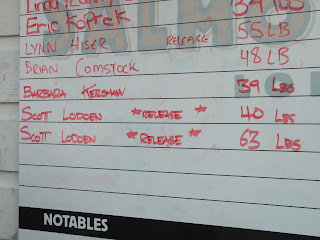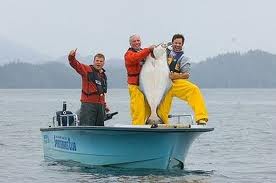Exploring Rivers Inlet
June-July 2004
This is an article from WaveLength Magazine, available in print in North America and globally on the web.
by Gordon Baron
|
|
Great paddling can be found on BC’s Central Coast.
|
For many people up and down the Pacific Northwest Coast, ‘Rivers Inlet’ means salmon. This area is legendary for its fishing, having attracted people for thousands of years. History, culture and traditions have revolved around fishing, and the salmon have been responsible for much of the economic development of BC.
Archaeological discoveries have provided physical evidence that the Oweekeno people have inhabited the mid coast of BC for 10,000 years. Traveling through their traditional territory, you feel almost transformed, as if you’re paddling back into time, surrounded by history—petroglyphs and pictographs, mounded shell middens and fish cannery ruins. Rivers Inlet is an explorer’s paradise of remote, secluded inlets, narrow passageways, channels, rivers and estuaries teeming with wildlife and sea creatures. This is where history, salmon, grizzlies, humans and kayakers come together.
Getting to Rivers Inlet by boat from Port Hardy on Vancouver Island means crossing the unprotected waters of Queen Charlotte Sound—a challenging adventure for boaters. This body of water is not recommended for kayakers without experienced guides. It’s wiser to take BC Ferries or hook up with a water taxi charter.
During the summer months, BC Ferries provides service to the Central Coast from Port Hardy and Bella Coola. Cruising north from Port Hardy, the crew of the Queen of Chilliwack will ‘wet launch’ you and your loaded kayak in the entrance to Fitz Hugh Sound in Darby Channel (referred to as Schooner Channel by locals). They’ll drop you behind Penrose Island, on its protected north side, next to Finn Bay. This archipelago is in the 200-hectare Penrose Marine Park, an area used by explorers for many years, as the names indicate—Schooner Retreat, Safe Entrance, Fury Cove, Secure Anchorage, etc.
Forty-eight kilometers in length, Rivers Inlet’s narrow fjord slices through the jagged edge of the Coast Mountain Range which rises more than a vertical mile from the turquoise glaciated water below, piercing through the clouds, exposing the glacier-scoured mountain peaks from the Pleistocene Ice Age.
From wide open bays with big swells and long distance crossings, to sheltered channels and passageways between islands, this is a place where both experienced and novice paddlers can have unique adventures.
FIRST PEOPLES
|
|
Not to be used to navigate.
|
For many years, First Nations’ villages dotted the inlets, bays, rivers, lakes and streams of BC’s Central Coast. The First Nations village economy was based on fishing, hunting and gathering. The traditional diet of Rivers Inlet’s Oweekeno people was primarily seafood—cod, halibut, eulachon, salmon and shellfish—although they also hunted for mountain goat, bear and deer, and gathered berries, plants and roots both for nourishment and healing purposes. This smorgasbord of natural resources, combined with the temperate climate, helped them to develop a rich and complex culture.
The village of Oweekeno is located three kilometers up the Wannock River which separates Rivers Inlet from Owikeno Lake. The Oweekeno Nation now has some 250 members, with only seventy living on the reserve due to the remoteness, lack of medical care, and the fact that there is no high school for teenagers.
Traditionally, Western red cedar was used by the Oweekeno people to carve ocean going canoes and totem poles, and to construct boardwalks and longhouses. Even the bark was used for clothing, baskets and hats. Raw materials that were abundant in one community and scarce in another provided items for barter, and trade routes were established between coastal nations and interior communities. The village of Oweekeno had trade routes which led south to Smith, Kingcome and Knight Inlets, and north to Bella Coola and Kimquit. These trails were used for many generations before contact with European explorers in the late eighteenth century.
A Hudson Bay fur trading post was established in 1833 at Fort McLoughin on Campbell Island, north of Rivers Inlet. This had little effect on the economy at Oweekeno. It took another fifty years before Rivers Inlet was introduced to the commercial workforce of the industrial revolution.
CANNERY LIFE
|
The restored Good Hope Cannery, the oldest building in Rivers Inlet.
|
In the spring of 1882, the steamer Barbara Boscourtz transported Robert Draney and crew to Sholtbolt Bay in Rivers Inlet, to start construction of a cannery on the site they had surveyed the year before. As the story goes, by the time the steamship arrived at its destination it was dark and snowing. The captain unloaded the crew and supplies then steamed away. It wasn’t until the next day that Robert Draney realized that the captain had overshot the drop-off by four kilometers, ending up at the head of Rivers Inlet. It would have taken too much time to relocate supplies and crew before the start of that year’s fishing season, so Draney built the cannery at the new location.
Sixteen more canneries were built, each like a small community, consisting of many buildings, with separate housing for the Europeans, Chinese, Japanese and First Nations people who made up most of the huge labor force needed to operate these massive operations. At the height of the fishing industry in Rivers Inlet, the population grew to an estimated 10,000 people during the summer months which meant many cultures and nationalities working together. The people of Oweekeno seemed to adapt quickly to modern technology of that era. Women worked on the canning line and the men went fishing.
Talking to the Oweekeno elders you can see by the smiles on their faces and tears in their eyes how memorable cannery life was to them. An elder remembers sitting out on the dock at Rivers Inlet Cannery in the evening as a small child, looking out at the twinkling on the water, seeing hundreds of lanterns—a floating city of lights. In 1934 alone, an estimated 1,900 boats fished Rivers Inlet, supplying fish to local canneries. During the fishing season many children were born there and by the time they were fourteen, some even worked on the canning line, along with their mothers.
After World War II, freezing technology improved and companies started to centralize their plants to the bigger cities of Prince Rupert and Vancouver, forcing many canneries to close. Goose Bay Cannery was the last to close in Rivers Inlet in 1957, ending three generations of people working in the canneries.
PADDLING RIVERS INLET
|
|
Ancient cultures flourished.
|
Exploring the northern entrance of Rivers Inlet by kayak from Penrose Marine Park to Dawsons Landing, some 32 kilometers north, could take you a week or more. Paddling west around the western tip of Penrose Island from Finn Bay, you will encounter reefs and swells until you reach Kayak Pass (Canoe Pass as locals call it) and Fury Cove. There is just enough water for kayaks. Powerboats use the Breaker Pass entrance. The beaches around Fury Island are spectacular with shell middens and white sand. This cove is a popular anchorage for boaters and the area is known as Schooner Retreat. On the east side of Penrose Island you enter Klaquaek Channel (or ‘the lake’ by locals), another small maze of islands, bays, lagoons and channels.
Circling Penrose Island from Finn Bay, you end up back at the entrance to Darby Channel. Paddling northeast through the channel you will see the two abandoned sites of Beaver and Provincial Canneries. The historic floating community of Dawsons Landing is just around the corner from these two sites. Dawsons and Duncanby Landing were the two major supply centers for the canneries in Rivers Inlet. Both are still in operation today and worth a visit.
Dawsons Landing, one of the oldest original floating general stores on BC’s coastline, dating back eighty years, is owned and operated by Rob and Nola Bachen. Today, Dawsons Landing is still the center of attraction for locals and visitors to Rivers Inlet. Walking on the floats and up the ramp to the store you get a feeling of nostalgia. The float the building sits on is a work of art—logs on top of logs, woven together and tied with steel cables, raising the complex two meters above sea level. Rafts like this were built and used during World War One to transport heavy logs across Hecate Strait to the sawmills and pulp mills on the mainland. These rafts—known as ‘Davis Rafts’—could handle the rough seas without breaking up.
Duncanby Landing is located at the southern shoreline entrance into Goose Bay, not far from the mouth of Rivers Inlet. This historic landmark was built in the 1930s. Owner Ken Gillis has kept this complex in good shape, continually upgrading the pier, boardwalk and buildings. ‘Jessie’s Place’ at Duncanby is the only dining room and pub open to the public in Rivers Inlet.
South of Duncanby is the Goose Bay Cannery, one of only two historical sites left in Rivers Inlet that remains intact. The secluded bay is mostly protected from the summer prevailing winds. Richard and Sheila Cooper lived at this cannery as caretakers for fourteen years, building a beautiful two story float home using old wood from the ‘China House’ that had been used to house the Chinese workers during the canning season. This float home is anchored in a bay just outside the Penrose Marine Park boundaries.
Another historical site in this area is the
Good Hope Cannery, the oldest building remaining in the inlet. Constructed in 1895, it operated until the early 1940s, then continued as a net storage and mending facility until 1965. For the last fourteen years, owner Bob Stewart and crew have done a remarkable job restoring the cannery and replacing the massive shake roof with a new, blue metal roof, lengthening the life of the building by many years. Every summer the cannery is used as a sport fishing lodge. Rivers Inlet is still one of the most popular saltwater sports fishing destinations in BC, even though commercial fishing has been closed in the inlet since 1996 due to the declining sockeye salmon stocks.
It could take months to explore the inlets, rivers, estuaries, lake tributaries connecting to Rivers Inlet, viewing wildlife, paddling around lagoons and sandy beaches, exploring the ruins and historic canneries. This is a paddling paradise with something for everyone.
© Gordon Baron restores buildings and trails on BC’s Central Coast.












